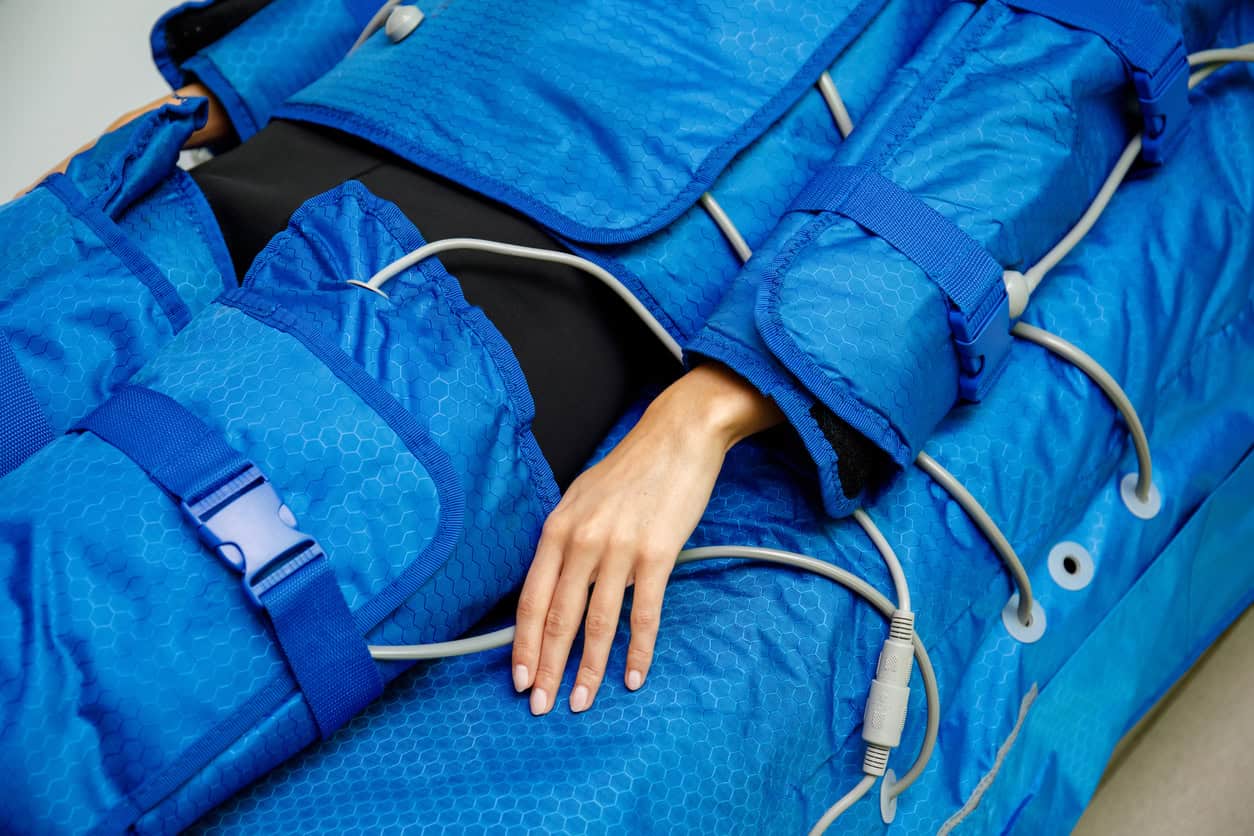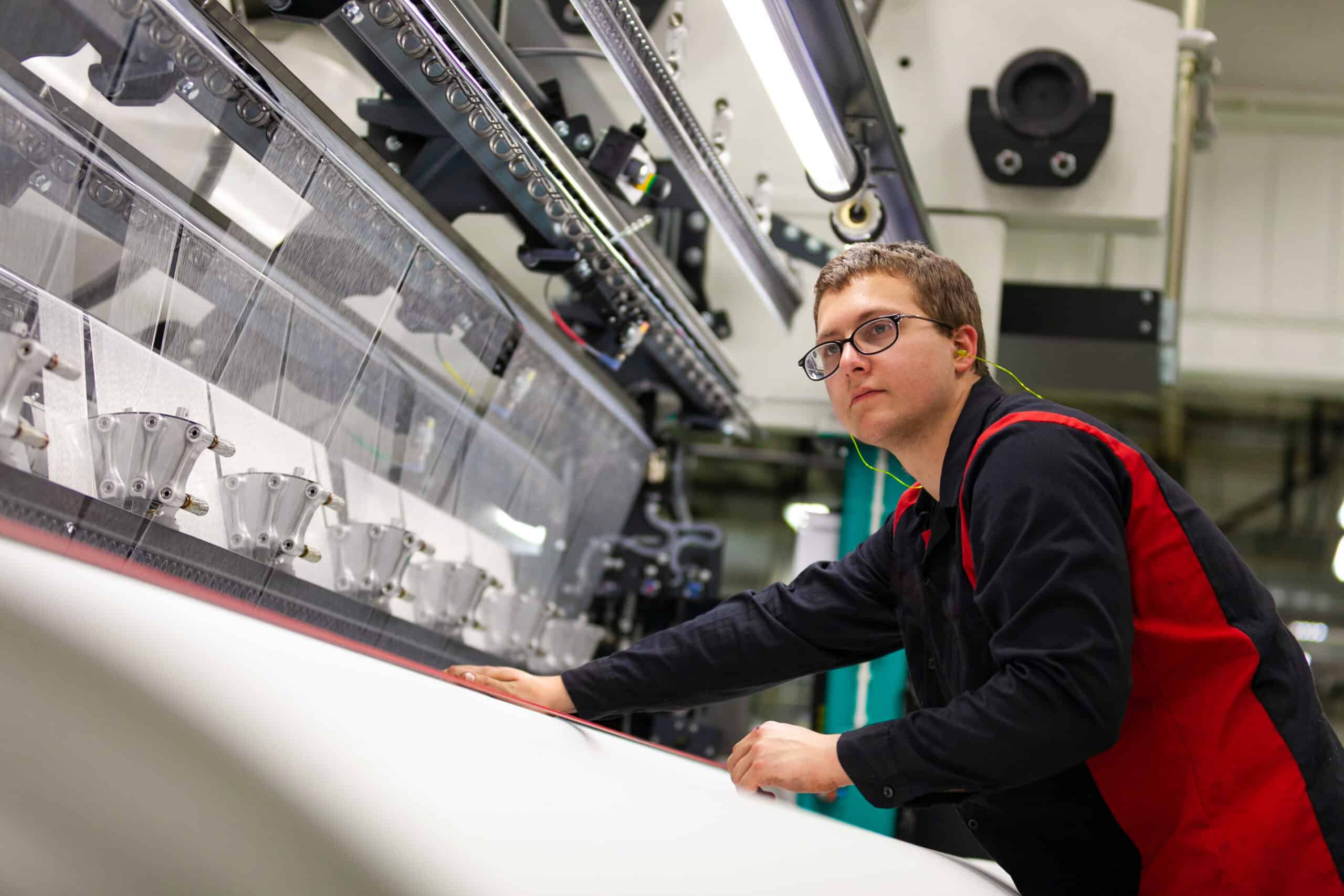Warp knitting provides material construction flexibility that many other methods can’t match. From flexible multi-layer materials for automotive interiors and fire retardant fabrics to laminated advanced material processes for a wide variety of medical fabrics, gowns, and equipment, high-performance warp knitting is extremely versatile and exploding in its uses. Many industry players are not familiar with the yarn production process and how technical fabrics and knitting can play a powerful, growing role in the advanced materials selection process.
A well-kept secret in the advanced material manufacturing industry is that we have some of the highest standards in yarn production because products in the sector (such as automobile interiors) are generally subject to higher physical stresses and temperatures. These performance stressors come from the requirement of a distinct advantage in physical and functional performance compared to conventional materials.
Achieving these advantages with fabric does not happen overnight. This brief on knitting standards for modern manufacturing will help you create advanced materials knitting projects that bring innovation, adaptability, and durability to your materials repertoire.
Know your Processes — Weft vs Warp Knitting
Knit fabric is a staple of the fabric industry. But when many people think of knitting, they refer to weft and circular knitting, which are the most common forms of knitting, especially for apparel we wear every day. With weft knitting, yarn is converted into fabric by forming a series of loose but connected loops in a horizontal direction which gives the fabric a natural mechanical stretch. Circular knitting creates a seamless tube and is primarily used to create tailored garments like sweaters, t-shirts, and tubular fabric products such as socks.
Despite weft knitting’s commonality and simplicity, warp knitting is emerging as the go-to process for many advanced materials projects. The fabric produced by warp knitting has a flatter, closer, and less-elastic knit through the formation of loops in a vertical or warp-wise direction. Typically produced across beams, warp knit is the fastest way to convert yarn to fabric, making it efficient and cost-effective. Some of the other benefits of warp knitting include:
- Structure: more knots result in more form while maintaining some give and take
- Flexibility: less shrinkage with excellent stretch characteristics
- Customization: highly tailored technical properties allow you to tackle more diverse design projects
- Versatility: warp knitting makes solid fabrics, meshes, and geo-grids
With its structured adaptability, high cost-efficient output, and ability to fashion around novel designs, warp knitting is, for many, the best choice for advanced materials fabric-based projects.
Before you Warp Knit
After selecting your process, choosing the right partner will help you to achieve versatility without sacrificing quality, integrity, and strength. So, before the fabric hits the beam, you’ll want to find a proven, high-quality yarn partner with a history of weaving across many advanced materials industries. When touring sites, look for facilities with tight humidity and temperature controls. Climate control will maintain the structure and form of your designs and prevent distortion.
During the Process
Collaboration with your advanced materials knitting partner is essential to the process. Consistent check-ins and regular communication will help you to get ahead of problems before the production phase. Consider utilizing a high sampling rate to routinely prioritize quality.
Your entire knitting production should follow an order of operations. First, you should simulate the process through prototyping and testing. Then, evaluate your product with integrated technology during the process. For example, in-line cameras can record and photograph the process to confirm quality as well as monitor for any quality concerns. Finally, you’ll want to inspect the finished product before you verify and finalize it.
Quality and Capability
Throughout the process, quality should be the driving factor in your decisions. Not only does it prevent defects, but it will keep you a step ahead of the competition.
With quality being the driving factor in advanced materials projects, warp knitting with its built-in quality checks has become the gold standard for many verticals. For this reason, the majority of OEMs in the automotive industry are using warp knitting to fabricate their automotive designs. As a customer, you’ll find that most advanced materials warp knit manufacturers will let you define the knit pattern or product and the best partners are capable of reverse engineering designs.
What’s on the horizon? Cutting-edge warp knit manufacturers are creating a portfolio of new proprietary products that do more than just recreate existing designs. They innovate and evolve projects with an eye toward the future, such as making the fabric or final materials more interactive with the end user for an enhanced experience. Although many warp knit fabrics are constructed from recycled materials now, look for full sustainability in the future with recyclable finished products, which start with the right type of base knit fabric.
The structure, performance, and sustainability attributes of a highly engineered warp knit project can exceed that of any other type of knitting and may be just what you need for your next successful product.




